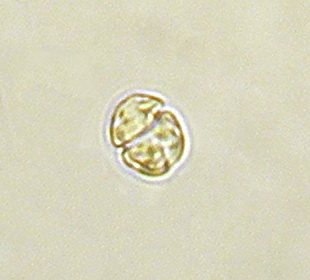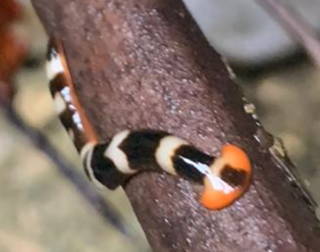
The president of Harvard University is the chief administrator of Harvard University and the ex officio president of the Harvard Corporation. Each is appointed by and is responsible to the other members of that body, who delegate to the president the day-to-day running of the university.
The 1898 United States House of Representatives elections were held for the most part on November 8, 1898, with Oregon, Maine, and Vermont holding theirs early in either June or September. They were held during the middle of President William McKinley's first term. Elections were held for 357 seats of the United States House of Representatives, representing 45 states, to serve in the 56th United States Congress. Special elections were also held throughout the year.

San Diego Mesa College is a public community college in Clairemont Mesa in San Diego, California. It is a California Community Colleges and one of four colleges in the San Diego Community College District.

The body whorl is part of the morphology of the shell in those gastropod mollusks that possess a coiled shell. The term is also sometimes used in a similar way to describe the shell of a cephalopod mollusk.

Gymnodinium is a genus of dinoflagellates, a type of marine and freshwater plankton. It is one of the few naked dinoflagellates, or species lacking armor known as cellulosic plates. Since 2000, the species which had been considered to be part of Gymnodinium have been divided into several genera, based on the nature of the apical groove and partial LSU rDNA sequence data. Amphidinium was redefined later. Gymnodinium belong to red dinoflagellates that, in concentration, can cause red tides. The red tides produced by some Gymnodinium, such as Gymnodinium catenatum, are toxic and pose risks to marine and human life, including paralytic shellfish poisoning.

Convolutidae is a family of acoels. It contains more than a third of all known acoel species.

Acoela, or the acoels, is an order of small and simple invertebrates in the subphylum Acoelomorpha of phylum Xenacoelomorpha, a deep branching bilaterian group of animals, which resemble flatworms. Historically they were treated as an order of turbellarian flatworms.

Veterinary pathologists are veterinarians who specialize in the diagnosis of diseases through the examination of animal tissue and body fluids. Like medical pathology, veterinary pathology is divided into two branches, anatomical pathology and clinical pathology. Other than the diagnosis of disease in food-producing animals, companion animals, zoo animals and wildlife, veterinary pathologists also have an important role in drug discovery and safety as well as scientific research.

Discina is a genus of ascomycete fungi related to the false morels of the genus Gyromitra. There are about 20 species in the genus. They bear dish- or cup-shaped fruit bodies. The best known member is the pig ear (D. ancilis), which is deemed edible after thorough cooking, although is viewed with suspicion given its relation to the highly toxic false morels.

Bipalium is a genus of large predatory land planarians. They are often loosely called "hammerhead worms" or "broadhead planarians" because of the distinctive shape of their head region. Land planarians are unique in that they possess a "creeping sole", a highly ciliated region on the ventral epidermis that helps them to creep over the substrate. Native to Asia, several species are invasive to the United States, Canada, and Europe. Some studies have begun the investigation of the evolutionary ecology of these invasive planarians.

Pusia is a genus of sea snails, marine gastropod mollusks in the family Costellariidae.

Obama is a genus of land planarians from South America. It contains several species adapted to human-disturbed environments, including the only invasive land planarian native to the Neotropical realm, Obama nungara, which has been accidentally introduced in Europe.

Clavularia crassa is a species of colonial soft coral in the family Clavulariidae. It is found in the eastern Atlantic Ocean and the Mediterranean Sea. It was first described in 1848 by the French zoologist Henri Milne-Edwards from a specimen collected off the coast of Algeria.

Diversibipalium multilineatum is a species of large predatory land flatworm.

Caenoplana is a genus of land planarians from Australia and New Zealand.

Diversibipalium is a genus of land planarians of the subfamily Bipaliinae. It was erected to include species lacking sufficient morphological information to allow them to be classified in the appropriate genus.
Anisorhynchodemus is a genus of land planarians of the tribe Rhynchodemini. It was erected to include species lacking sufficient morphological information to allow them to be classified in the appropriate genus.

Polykrikos is one of the genera of family Polykrikaceae that includes athecate pseudocolony-forming dinoflagellates. Polykrikos are characterized by a sophisticated ballistic apparatus, named the nematocyst-taeniocyst complex, which allows species to prey on a variety of organisms. Polykrikos have been found to regulate algal blooms as they feed on toxic dinoflagellates. However, there is also some data available on Polykrikos being toxic to fish.

Vermiviatum covidum is a species of predatory land flatworm, found in France and Italy. The Holotype specimen is MNHN JL351B.

Diversibipalium rauchi is a species of land planarian within the family Geoplanidae. The species is native to Singapore on its main island Pulau Ujong. A number have also been found occurring in Florida, however it is unknown if there is an established population or is simply frequently introduced. The species is ornately patterned with broad black and white bands running throughout its body, ending in an red-orange lunate-shaped head.
















